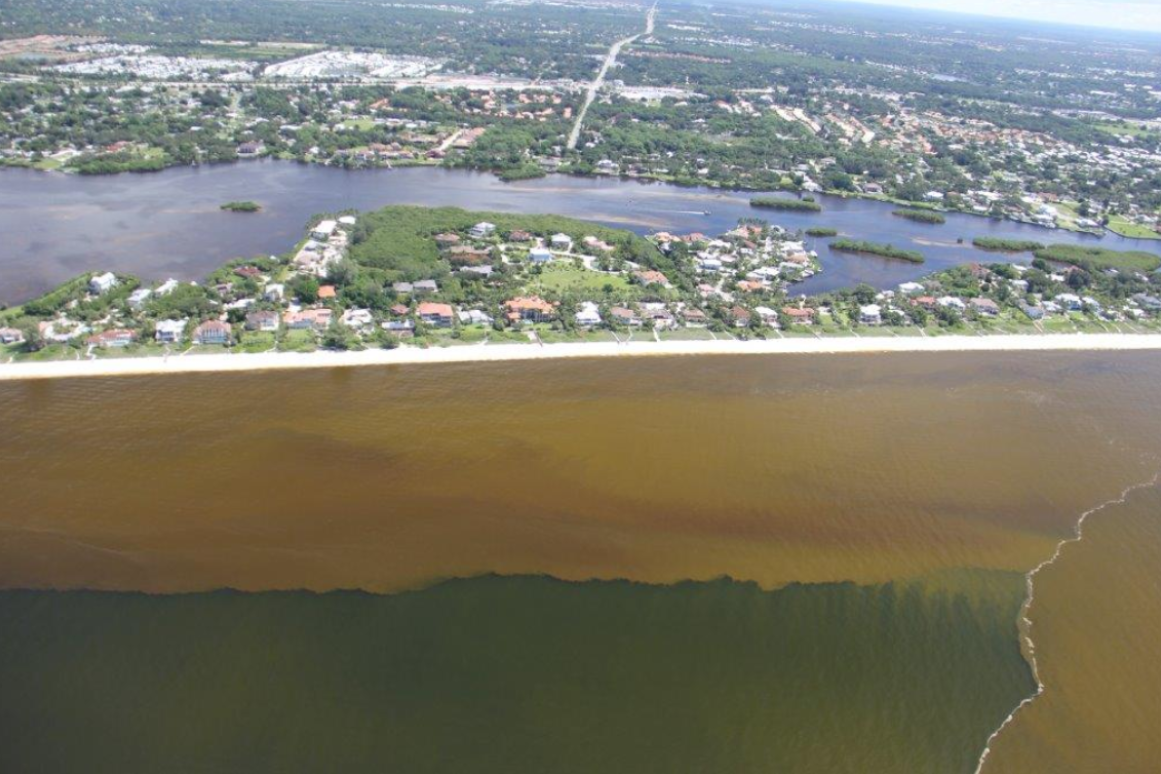GCOOS, NCCOS Award $556K for New Studies to Uncover the Costs of Florida’s Red Tide

GCOOS, NCCOS Award $556K for New Studies to Uncover the Costs of Florida’s Red Tide
Across the U.S., the seafood, restaurant and tourism industries are estimated to suffer millions of dollars in economic losses from harmful algal blooms — losses played out in communities from California to New England, and Ohio to Florida. But the true economic losses caused by toxic algae blooms are unknown.
Now, the Gulf of Mexico Coastal Ocean Observing System (GCOOS) and NOAA’s National Centers for Coastal Ocean Science (NCCOS) are funding two new studies designed to uncover the full costs of harmful algal blooms (HABs) across numerous sectors — from tourism and seafood to industries where impacts are less visible, such as healthcare and construction.
HRI's Dr. David Yoskowitz will be partnering on one of the two projects to help researchers better understand the short and long-term socio-economic impacts of red tide.
As a state that relies heavily on these sectors, Florida is especially vulnerable to the socioeconomic damages of toxic blooms. This was apparent during the prolonged red tide that began in 2017 and lasted through early 2019, causing the state’s governor to declare a state of emergency.
There are thousands of species of algae — phytoplankton — in fresh and marine waters. They are essential to life, forming the basis of the food web and providing an important source of oxygen. While most species are harmless to humans and animals, some, like the Karenia brevis that causes Florida’s red tide, are toxic. When these species multiply they can wreak havoc on human and marine animal health, contaminate seafood and devastate local economies.
“We know that in Florida and across the U.S., HAB events are becoming more frequent, more toxic, longer lasting and more widespread,” said Dr. Barbara Kirkpatrick, Executive Director of GCOOS. “While we can’t eliminate blooms, having a better understanding of their mechanics as well as their negative consequences can help resource managers lessen their impacts on communities. That’s why these new studies are so important.”
While conducting regular dolphin surveys in Sarasota Bay, Florida, during the 2017-2019 bloom, researchers with Chicago Zoological Society’s Sarasota Dolphin Research Program regularly came across pockets of dead fish in canals and other areas. Their studies documented a nearly 90 percent decline in prey fish available to this long-term resident dolphin community during the bloom. Their ongoing research also provides an indicator for how large the potential impact was on the human fishing community.
The studies will evaluate the sociological and economic impacts of Florida’s 2017-2019 red tide event and develop a framework to inform future assessments of other HAB events with the goal of mitigating economic impacts on communities.
About the Awards
Project Title: “From Bloom to Bust: Estimating Economic Losses and Impacts of Florida Red Tide (Karenia brevis)” will be conducted by Drs. Sergio Alvarez from the University of Central Florida and Dr. Heather O’Leary from the University of South Florida. $277,122.
Project Summary: This two-year project will examine the economic impacts of K. brevis events across 80 different sectors, based on varied bloom occurrence and intensity. Understanding the true costs of HABs is key to developing effective response and adaptation strategies that meet the needs of impacted communities in Florida and around the country.
“We know that harmful algal blooms drive people away from the waterfront,” Alvarez said. “With this project, we will identify how Florida red tide has been impacting the state’s economy in terms of reduced sales from different economic sectors. But we are also testing the idea that information from social media could be more of a driver in these impacts than so-called objective measures, like water sampling data.”
Adds O’Leary: "When everyday people make the small-scale and large-scale decisions that ultimately impact Florida's economy, they're not necessarily checking biophysical monitoring or formal economic metrics. They're more likely making those decisions by checking with friends and colleagues on social media. By keeping one eye on social media and the other on economic metrics, we're able to get a better sense of how these interact to make HABs worse, or to lessen their impact."
Project Title: “Assessment of the short- and long-term socioeconomic impacts of Florida’s 2017-2019 Red Tide event” will be conducted by Drs. Christa Court, Xiang Bi, Jin Won Kim, Angie Lindsey, Stephen Morgan, Andrew Ropicki and Ricky Telg from the University of Florida and David Yoskowitz from the Harte Research Institute, Texas A&M University Corpus Christi. $279,796.
Project Summary: This two-year project will comprehensively quantify and qualify the short- and long-term socioeconomic impacts of the 2017-2019 Karenia brevis event in Florida and develop a transferable framework to help inform national-scale efforts focused on quantifying as well as measuring community vulnerability and resiliency.
“Informed decision-making associated with HAB mitigation and coastal resource management requires the comprehensive assessment of short- and long-term socioeconomic impacts,” said Court, lead researcher and an economist with the University of Florida Institute of Food and Agricultural Sciences. “The outcomes of this project are not only important for the state of Florida but will inform ongoing discussions related to mitigation and prevention of HABs and their associated impacts amongst academics, federal, state and local policymakers, as well as industry stakeholders, recreational users and the general public.”
